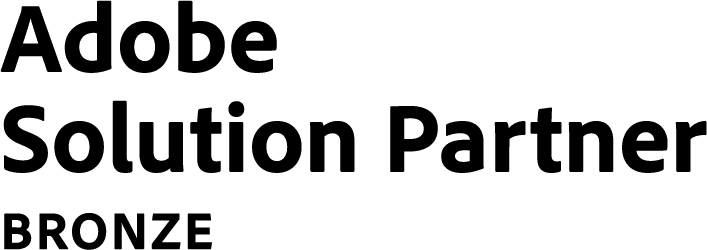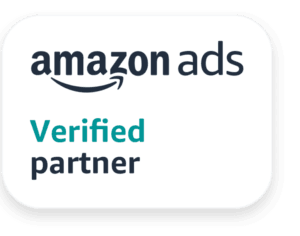This website uses cookies so that we can provide you with the best user experience possible. Cookie information is stored in your browser and performs functions such as recognising you when you return to our website and helping our team to understand which sections of the website you find most interesting and useful.
18 Aug

Build A Robust Product Recommendations Engine To Boost Sales
Do you know that people who click on product recommendations are 2x more likely to convert? Nowadays, nearly every online business leverages product recommendations to boost revenues, increase customer satisfaction, and solidify personalization. There’s no doubt if they are set up properly, they can improve click-through rates, conversions, average order value, and other important metrics for the business.
What is a Product Recommendation Engine?
It is a system that collects data and uses algorithms to make recommendations to benefit the customer as well as the store. The data is collected for every user and analyzed by criteria such as past purchases, search history, or demographics. It helps to make decision making smooth by showing a narrow choice of highly relevant products. According to a report by Salesforce, it accounts for a small percentage (7%) of visits but a considerable chunk of revenue (22%).
How to Leverage Product Recommendations on Websites?
Shoppers today expect a seamless and customized experience while browsing or shopping online. To cater to this, a sophisticated recommendation engine is more important than ever, which in turn helps businesses to boost their conversions, Although most customers are looking for an enhanced personalized experience, only 22% are satisfied with the level of personalization they receive as per a report by Business Insider. By improving the shopping experience, product recommendations can provide an impetus to your business. The type of recommendation will depend on where the user is in his journey. Below are the best practices to keep in mind while designing effective recommendations:
- Homepage
The homepage or the main page is the first interaction point of any user coming to the website. For first time visitors, they don’t have a specific intent in their minds. Stores will not have enough data about them to recommend relevant products. Hence, recommendations on the homepage for first-time visitors aim to help them discover and explore products. For returning visitors, since you already have data about their recent purchases and browsing history, personalized product recommendations can be utilized. For example, if the customer previously bought a camera, you can show new arrivals of camera accessories.
Product recommendations that can be utilized here include:
- Most popular products – different rules can be set for popularity
- Best selling products
- Newly launched products
- Products on offers or sales
- For returning visitors, items related to previous purchase or discounts on recently viewed products
- Category Pages
The category page needs to be clear and quickly differentiated. Recommendations on category pages work like homepage, though they are different in one aspect. They showcase products to the visitors specific to the category or sub-category they are looking at. Here new and returning visitors tend to see different products based on their interaction with the website.
Product recommendations that can be utilized here include:
- Best selling products of the category
- Popular products of the category
- Newly added products in the category
- Products on offer or sale in the category
- For the returning visitors, products related to their purchase from this category
- Product Pages
The product information page shows detailed information about the product. When customers visit a product page, we have some data to determine whether this is their first product or have they seen other products. Using the available data we can provide tailored suggestions. Recommendations on product pages aim to increase conversion rate and average order value.
Product recommendations that can be utilized here include:
- Related or complementary products (cross-sell)
- Accessories (cross-sell)
- Similar products
- Frequently bought together (up-sell)
- Cart Pages
When customers are in the last step of the journey, it is important to let them complete the transaction without any distraction. But, businesses can leverage this opportunity to increase sales by recommending products effectively. The main purpose of the product recommendations on the cart page is to increase order value.
Product recommendations that can be utilized here include:
- Add-ons or accessories (cross-sell)
- Recently viewed products
- Higher value variant of products already in the cart (up-sell)
- Add-ons to get free shipping or other offers
- Frequently bought together products for products already in the cart (up-sell)
- Order Confirmation Page
When customers have made their purchase, most businesses think that the deal is done. However, that is not always true. Online stores should still recommend products based on user interaction. The main aim of this recommendation is to give people another hook so that they can continue their journey on the website and hence restart the loop again. The recommendations here should be more personalized, as we have significant data at this stage.
Product recommendations that can be utilized here include:
- Cross category recommendation
- Bestsellers (related to the purchased items)
- Trending products
- New arrivals
- Error or Out of Stock Pages
Getting to a ‘404 error’ page or ‘out of stock’ page often means that the user is going to abandon the purchase. These error pages often have a very high exit rate which is a potential loss of conversion. Businesses can turn these pages into an opportunity by showing bestsellers (to keep users engaged), items based on browsing history, etc. This can be a great catalyst in resuming the otherwise interrupted experience.
Product recommendations that can be utilized here include:
- Products similar to the sold-out or searched items
- Recently viewed items
- Bestsellers
Conclusion
Users arrive on a website from various channels. Whether you’re looking to upscale your current recommendation engine or build one from scratch, it is imperative that you provide users with intelligent guidance. Once the basic rule-based framework for product recommendations is set, a detailed analytics and data capturing system must be implemented by adding another data layer. Thereafter, one can refine the recommendations using machine learning.
There are numerous product recommendations that a business can use to increase revenues, customer engagement and experience. But the key here is to keep your short term and long term goals in mind and then start to implement them in a phased manner. With a robust product recommendation engine, you will help users make more informed choices with much ease and thus boosting your top and bottom line. Implementing a sophisticated product recommendation engine with cutting edge technology is the key to stay ahead of your competition.
If you’re looking to revamp your product recommendations and boost your sales, contact us and let’s talk.
Related Post
Industries Served
United States
India













